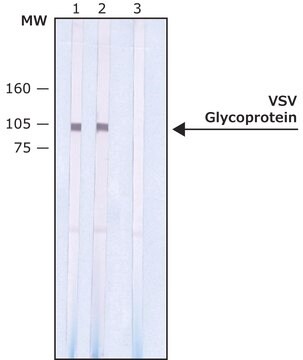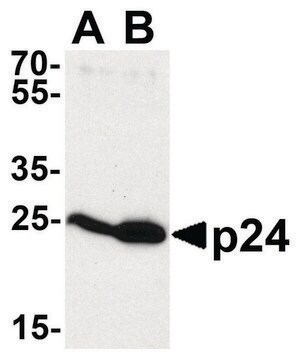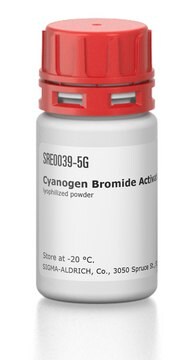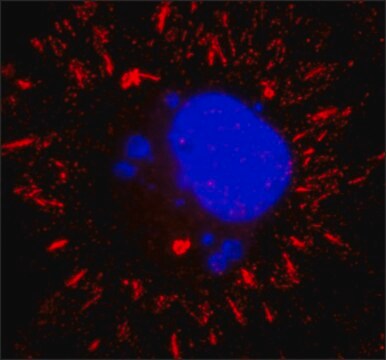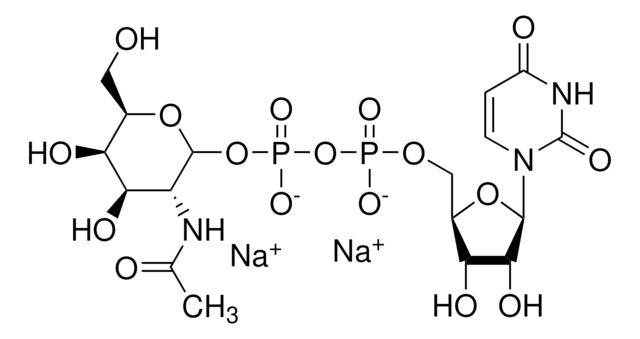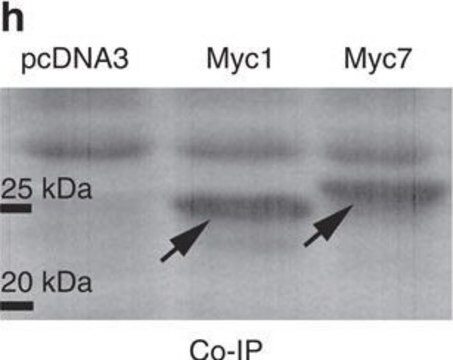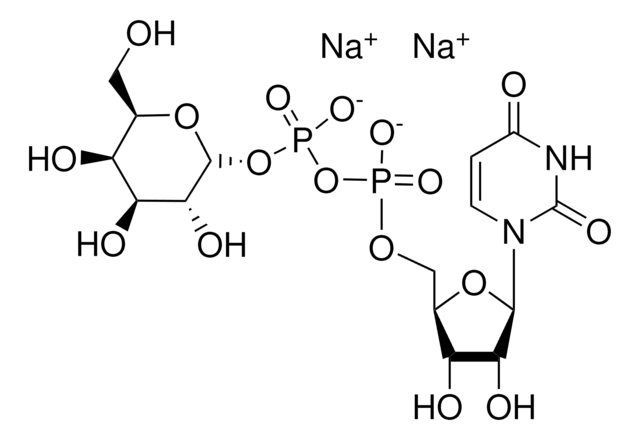V4888
Anti-VSV-G antibody produced in rabbit
affinity isolated antibody, buffered aqueous solution
Sinônimo(s):
Anti-Vesicular Stomatitis Virus glycoprotein
About This Item
Produtos recomendados
fonte biológica
rabbit
Nível de qualidade
conjugado
unconjugated
forma do anticorpo
affinity isolated antibody
tipo de produto de anticorpo
primary antibodies
clone
polyclonal
Formulário
buffered aqueous solution
reatividade de espécies
mammals
concentração
~1.0 mg/mL
técnica(s)
immunoprecipitation (IP): 0.5 μg using VSV-G tagged fusion proteins from transfected mammalian cell lysates (tagged fusion proteins from transfected mammalian cell lysates)
indirect immunofluorescence: 1.0 μg/mL using VSV-G tagged fusion proteins in methanol/acetone fixed transiently transfected cells
western blot: 0.1-0.2 μg/mL using VSV-G tagged fusion proteins from transfected mammalian cell lysates
Condições de expedição
dry ice
temperatura de armazenamento
−20°C
Descrição geral
Imunogênio
Aplicação
immunocytochemistry.
Chromatin immunoprecipitation (1 paper)
Western Blotting (1 paper)
Western blotting following immunoprecipitation (1 paper)
Ações bioquímicas/fisiológicas
forma física
Não está encontrando o produto certo?
Experimente o nosso Ferramenta de seleção de produtos.
Código de classe de armazenamento
10 - Combustible liquids
Classe de risco de água (WGK)
WGK 3
Ponto de fulgor (°F)
Not applicable
Ponto de fulgor (°C)
Not applicable
Escolha uma das versões mais recentes:
Já possui este produto?
Encontre a documentação dos produtos que você adquiriu recentemente na biblioteca de documentos.
Nossa equipe de cientistas tem experiência em todas as áreas de pesquisa, incluindo Life Sciences, ciência de materiais, síntese química, cromatografia, química analítica e muitas outras.
Entre em contato com a assistência técnica